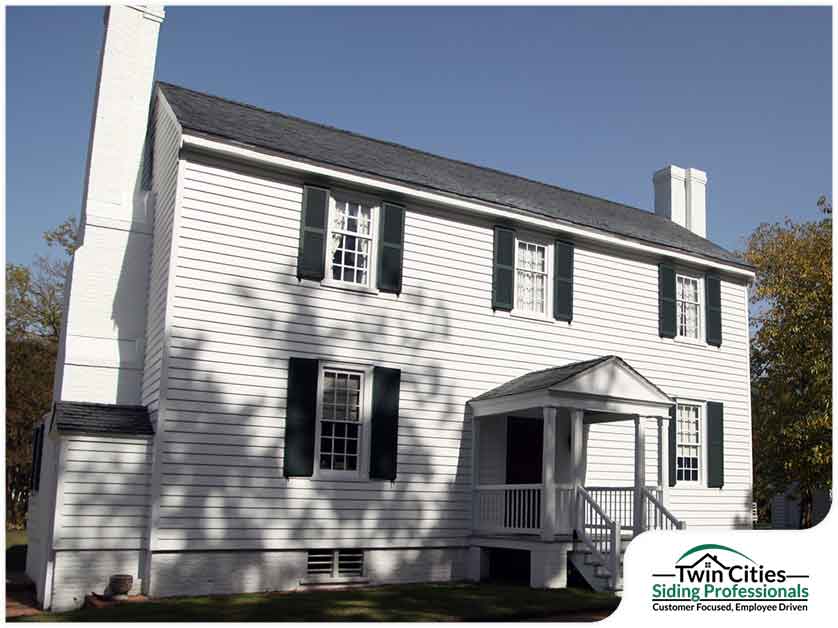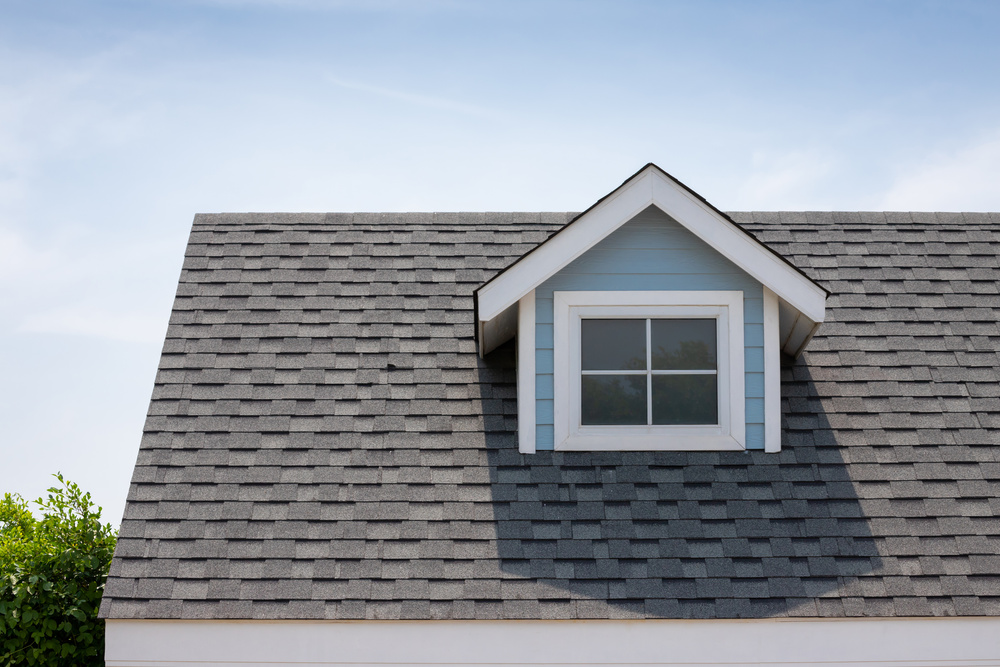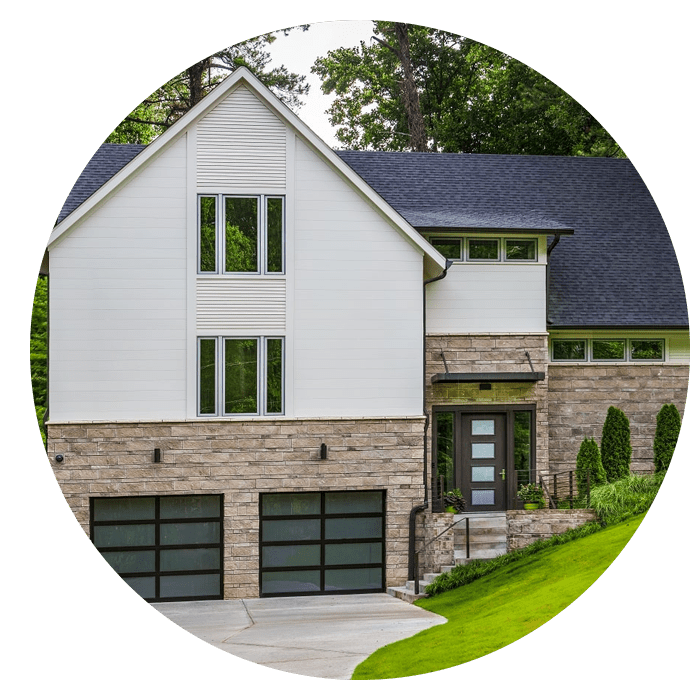In Minnesota, your home’s siding is about lasting protection. From heavy July downpours to subzero January cold snaps, Twin Cities homes face a relentless cycle of weather, pests, and seasonal wear. Choosing the right siding is one of the most important decisions you can make to preserve your home’s value, efficiency, and safety year after year.
So how exactly does siding protect your home beyond the surface?
Let’s take a closer look at how quality siding works hard all four seasons—and what signs suggest your current siding might not be keeping up.
Key Takeaways
- Siding on Twin Cities homes must handle moisture, wind, pests, and snow to protect walls in every season.
- Good siding helps reduce heating and cooling costs by stopping air leaks and improving overall home energy efficiency.
- Common siding issues like cracks, stains, or high energy bills often signal that it no longer protects your home.
- New siding improves your home’s appearance, increases value, and provides long-term protection in Minnesota’s tough climate.
1. Stops Moisture from Damaging Your Walls
In the Twin Cities, where snowstorms blanket homes in January and heavy rainstorms roll through by July, the siding on your home must do more than look good. It must perform.
The sole purpose of quality home siding is to act as the first line of protection against moisture, keeping your walls safe from rot, mildew, and water damage. Especially in areas like Minneapolis and St. Paul, older homes with worn-out siding often show interior stains or peeling paint after long winters.
Fiber cement siding stands up to these conditions far better than wood siding or vinyl, offering an essential barrier in Minnesota’s unpredictable climate.
2. Defends Against Wind and Flying Debris
High winds in open neighborhoods like Eden Prairie or Shoreview can cause elements like tree limbs or debris to strike your home. Without durable siding materials, your home’s exterior is at risk of penetration and structural damage.
Fiber cement siding excels in durability, standing up to both wind and rain. Some vinyl siding products also perform well when properly installed, but thinner panels can crack under pressure.
Choosing the right siding ensures your property stays protected from the elements while keeping your building in good condition year-round.
3. Insulates Against Extreme Temperatures
Winter in Minnesota can push heating systems to their limit, while summer brings humidity that infiltrates any weak spot in your home’s exterior. Your siding plays a pivotal role in reducing heat loss and maintaining energy efficiency—not just for your walls, but for your entire living space.
Many homeowners in Eagan and surrounding cities invest in siding replacement as a way to lower long-term energy costs and avoid spikes in heating bills.
Properly insulated siding materials help regulate temperature swings and protect your home’s energy efficiency, especially when installed as part of a new construction envelope or full replacement project.
4. Blocks Insects and Pests from Entering
In wooded areas around St. Paul, pests such as carpenter ants, termites, and other burrowing insects are a common issue. Older wood siding can act like an open invitation, especially if it’s cracked or softened by moisture.
Some other materials, like basic vinyl siding, offer better low-maintenance performance, but they don’t match the pest resistance of fiber cement siding.
Homeowners investing in new siding, such as James Hardie fiber cement, are also investing in long-term protection against damaging pests that can compromise the integrity of their house over time.
5. Enhances Energy Efficiency Year-Round
Beyond temperature regulation, siding can also improve the performance of your front door, windows, and even attic ventilation by sealing up weak points in your construction. The crucial role siding plays in reducing air leaks and blocking outside drafts is often overlooked.
Whether you’re retrofitting a century-old property or adding vinyl siding to a growing family home in a newer neighborhood, boosting energy efficiency through the right siding choice is a smart way to protect your investment and reduce costs over decades.
6. Improves Curb Appeal and Property Value
For Twin Cities homeowners, especially those in high-visibility city areas or on busy traffic corridors, aesthetic appeal matters. Faded, cracked, or outdated siding reduces curb appeal and can even lower resale value.
By replacing aging materials with more modern options, you immediately improve your home’s exterior appearance.
Whether you install vinyl siding for its clean look and easy upkeep, or choose fiber cement for its realistic wood texture and fire resistance, updated siding makes a dramatic difference in style, resale appeal, and long-term market positioning.
Signs Your Siding Is No Longer Protecting Your Twin Cities Home
If you’re wondering whether your current siding is still doing its job, there are clear warning signs to watch for—especially in a place like the Twin Cities. Here are some of the most common indicators that your siding may no longer be protecting your property as it should:
Warping, Cracking, or Bubbling Panels
If your siding is starting to warp, crack, or bubble—especially in homes around South Minneapolis or Midway—it may be reacting to constant cycles of freezing, thawing, and UV exposure.
This is a sign that the siding material is deteriorating and no longer able to withstand Minnesota’s harsh weather and extreme temperatures.
Higher Energy Bills Despite Consistent Usage
A sudden jump in energy costs with no change in usage is often a red flag that your siding is failing to insulate properly. Aging siding in historic districts like Crocus Hill can allow drafts through, undermining your HVAC system.
Replacing old siding with new, energy-efficient options can restore comfort and reduce utility costs—especially in peak winter and summer seasons.
Mold, Mildew, or Water Stains on Interior Walls
Stains, peeling paint, or a persistent musty odor could mean water damage is making its way past your exterior. This often happens when siding loses its sealant properties or when flashing around doors and windows fails.
Homes near low-lying sites or shaded areas are especially prone to mildew buildup—another clear signal it’s time to explore replacement options.
Pests Gaining Access to the Interior
If you’re noticing small pests sneaking in—even around your front door—your siding could be the weak point.
Gaps, cracks, and aged materials often allow insects or rodents to enter unseen. This is a common issue in older buildings where the siding may have served its time but is now beyond repair.
Paint Fading Too Quickly or Peeling Prematurely
Paint that fades after just one or two seasons in neighborhoods like Highland Park often signals that the underlying siding is no longer in good condition.
Continuous UV exposure degrades cheap siding materials, and eventually, this results in both structural failure and loss of aesthetic appeal. Investing in low-maintenance alternatives like fiber cement can solve this problem for the long haul.
Ready for a Siding Upgrade That Performs All Year?
Your siding shouldn’t just look good. It should be doing the heavy lifting of protecting your home from snow, rain, fire, and wind. If you’re seeing any signs that your siding is no longer up to the job, it’s time to take action.
Our team at Twin Cities Siding and Roofing is here to help with expert siding replacement tailored for Minnesota climate conditions.
Schedule a free estimate or call (651) 571-9557 to start investing in your home’s exterior with confidence.
Frequently Asked Questions
What factors affect the aesthetic appeal of new siding choices?
The aesthetic appeal of new siding depends on color profiles, material texture, and architectural fit. Our team helps homeowners select siding that enhances curb appeal while delivering long-term performance and energy efficiency.
How does siding protect your home’s exterior during extreme weather?
Understanding how siding protects your home’s exterior starts with proper material selection. Our siding installations are built to resist the elements siding acts against—wind, snow, and moisture common across the Twin Cities climate.
Why is it important that siding installation follows local building codes?
All siding replacement projects must follow local building codes to ensure structural safety, insulation performance, and warranty compliance. Our office handles code adherence and inspections for every siding job we take on.
What’s the best low-maintenance home siding for year-round value?
Homeowners who want low-maintenance siding with strong resale value often choose fiber cement. Our siding replacement services focus on high-durability options that offer excellent weather protection and long-lasting style.




